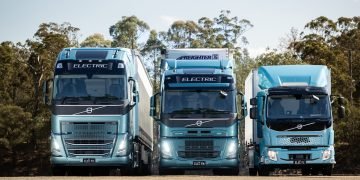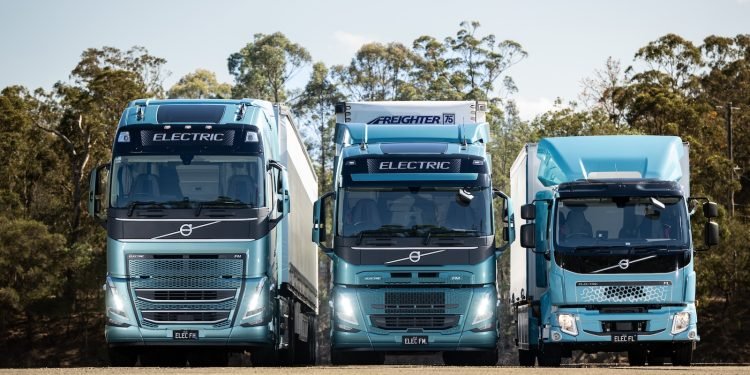By Maria Kalamatas | August 5, 2025
Sydney, August 5 — On the western edge of Sydney’s industrial belt, just before sunrise, the first of sixty electric trucks rolled out of the TGE depot. Quiet. No engine noise. Just the faint whir of tires on pavement and a few blinking lights on the dashboard.
“We didn’t expect this many stares,” said Reece Dalton, one of the drivers piloting a new electric Volvo on its morning route. “People still aren’t used to seeing rigs that don’t make a sound.”
TGE — short for Team Global Express — has begun live trials with electric trucks on metropolitan delivery routes. It’s one of the largest rollouts of zero-emission vehicles in Australian logistics to date.
The switch isn’t simple
The trucks aren’t cheap. That’s the first thing operators mention. Each unit costs nearly twice the price of a diesel equivalent. Charging stations are still being installed. Routes have to be recalculated daily based on range and battery availability.
But there’s movement.
“These aren’t demo units sitting on display stands,” said a site manager outside Parramatta. “They’re hauling real loads. Groceries. Appliances. Pallets of bottled water.”
Not everyone is convinced
Some veteran drivers are skeptical. The torque is different. The brakes respond faster. And there’s the matter of waiting 2–3 hours to recharge after every shift.
“It’s fine for city runs,” said one operator, pulling off his gloves. “But send me to Wollongong or Canberra and I’ll need a diesel. No way around that—for now.”
Fleet planners admit that the trucks are best suited to short-haul urban loops. Anything longer, and the math gets complicated.
Government backing, cautious pace
The project received funding under a state-run clean transport initiative. But most of the cost still rests on TGE’s shoulders. A company official said the goal isn’t overnight replacement, but understanding what works — and what doesn’t.
“We’re learning,” he said. “Not just the tech. The operations, the people, the schedule. All of it.”
There are also plans to share performance data with other logistics firms and regulators, in hopes of accelerating broader adoption.
A glimpse of what’s coming
For now, the electric trucks are still outnumbered by their diesel counterparts 100 to 1. But the quiet rumble through Sydney’s warehouse districts feels different.
The logistics industry in Australia, often slow to change, is watching closely. And while most experts agree that full electrification is still years away, something’s shifting.
“You don’t flip a switch and go green,” Dalton said, checking his route again on a tablet. “But this — this is a start.”























